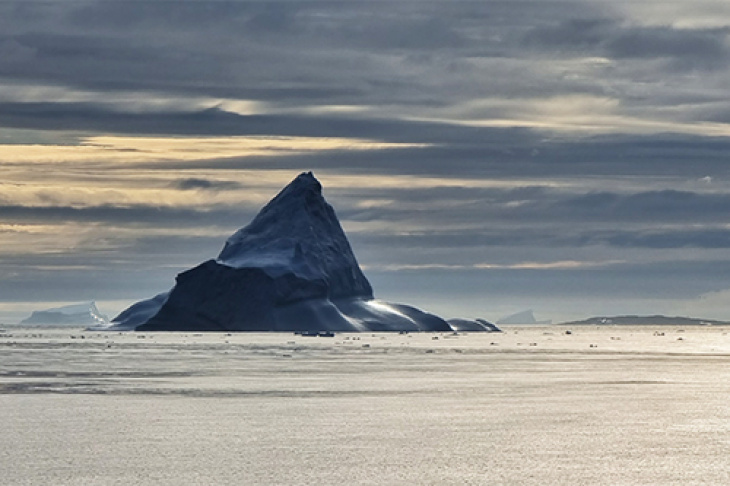Triggers for ecosystem change

Melting ice: Various pollutants can be measured in the Arctic. Photo: Hereon/ Eik Ehlert Britsch
For many coastal researchers, going out to sea is the real fulfillment of their profession. While doing so, they implement experiments and take measurements. That's what five scientists from the Helmholtz-Zentrum Hereon will now be doing. As part of the EU-funded ECOTIP project, they are leading an expedition to Greenland on the research vessel MS MERIAN. From August 6 to 29, they will be on a mission to learn more about what environmental influences or pollutants they can detect through their sampling that fundamentally alter ecosystems.
"Even I am still excited before such a trip and look forward to discovering new things," says Prof Helmuth Thomas, head of the Hereon Institute of Carbon Cycles. Joining him on the Hereon side on the expedition are Claudia Schmidt, Niklas Hempel, Chantal Mears and Dr Tristan Zimmermann. In total, 22 scientists and 23 crew members will be on board.
The focus of the Hereon team's work will be to take water and sediment samples to find out which pollutants, but also which other environmental influences such as changes in pH or invasive species, are detectable in the Arctic. They examine the samples for various heavy metals such as lead or mercury as well as microplastics in the different ocean currents. For this purpose, they are also looking at fish, snails, and phytoplankton as part of the food chain. Some of the substances have been carried into the ice via the air and bound there since the beginning of the industrial revolution about 150 years ago. If they are now released again as a result of the melting of glaciers - mainly due to global warming caused by man-made climate change - they will again pollute the flora and fauna and become a danger to humans. Climate change is damaging the Arctic ecosystem in many ways, especially with the slow disappearance of sea ice. Being able to predict changes here is very important - precisely because of gaps in knowledge that still exist. "All this has an influence on the carbon cycle in the ocean, i.e. on how much CO2 is bound or released in the ocean," says Helmuth Thomas. He and his team would like to be able to draw more conclusions about this and other questions after the expedition.
Backround
The EU-funded ECOTIP project is looking more closely at the causes, limits and consequences of the irreversible tilting ecosystem and their impact on biodiversity in the Arctic Ocean. The historical and current biodiversity of the Arctic and its responses to foreign influences are also being studied. With input from indigenous people living in the Arctic region, ECOTIP will develop recommendations on how to improve monitoring of biodiversity and its ecosystem services. Hereon receives nearly 700,000 euros in EU funding and is one of 14 participants in the project.
Further Information
Contact
Institute of Carbon Cycles
Helmholtz-Zentrum Hereon
Communication and Media
Helmholtz-Zentrum Hereon
